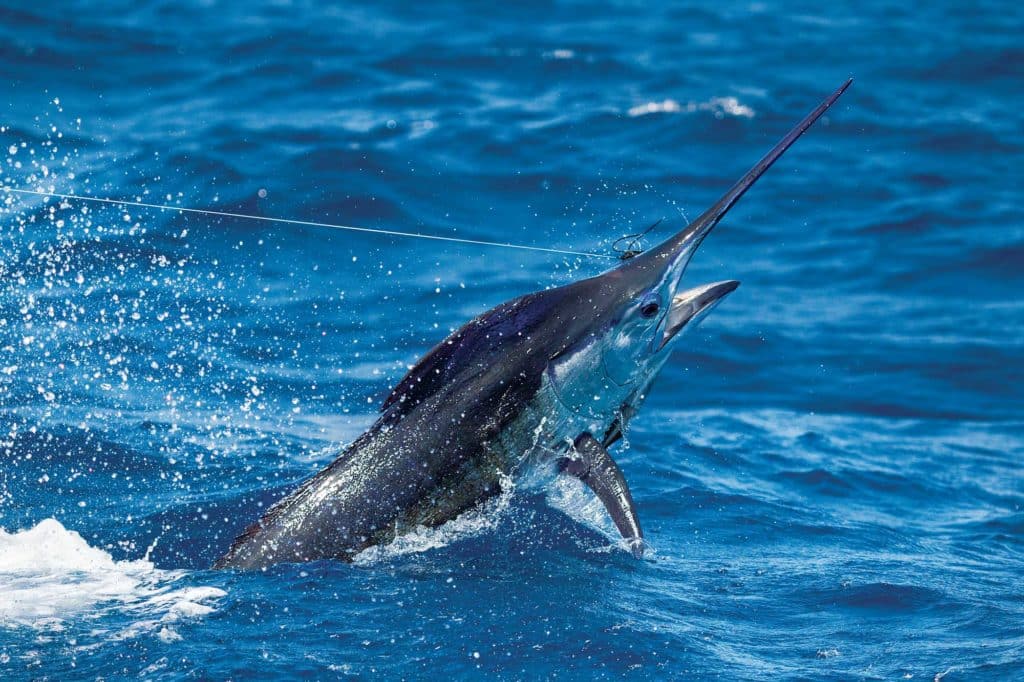
As the water cools with autumn’s arrival in the eastern Gulf of Mexico, bait congregates less than 40 miles offshore. Small blue marlin, white marlin and sailfish converge to welcome this influx of forage, joined by plenty of yellowfin tuna, wahoo and dolphin. With all those coveted species in close proximity, anglers aboard center consoles and walkarounds make the easy run offshore from Alabama and Florida’s Panhandle to partake of the hot bite.
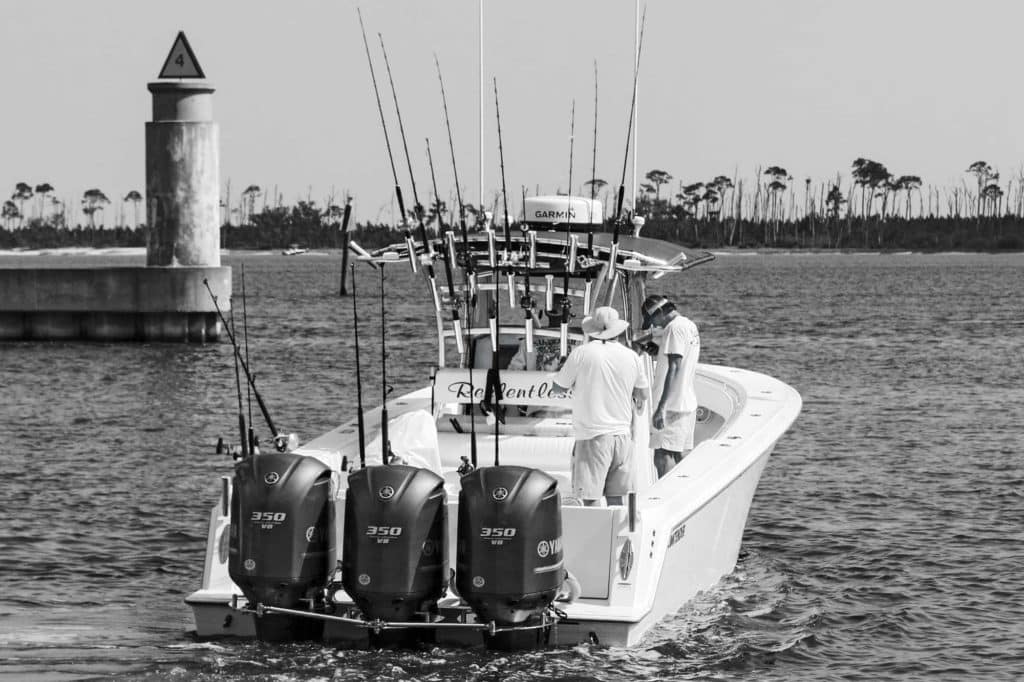
Unlike summer, when chasing billfish and other big game calls for long runs to the Green Canyon or various deepwater oil rigs, fall fishing doesn’t require the fuel supply or creature comforts found mostly in the larger sport-fishers. Quick and nimble, many smaller craft are perfectly suited for the fast-paced action in autumn, when the potential for multiple shots at fish manageable on light tackle also increases.
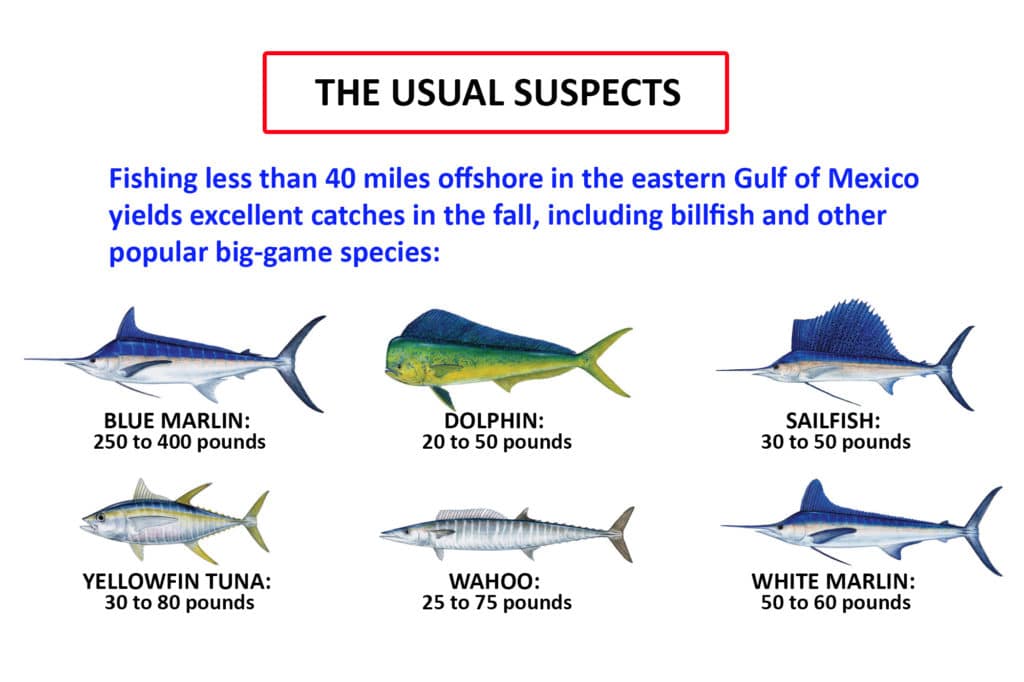
All the popular offshore species come within range of small boats during the fall baitfish migration in the Gulf of Mexico.
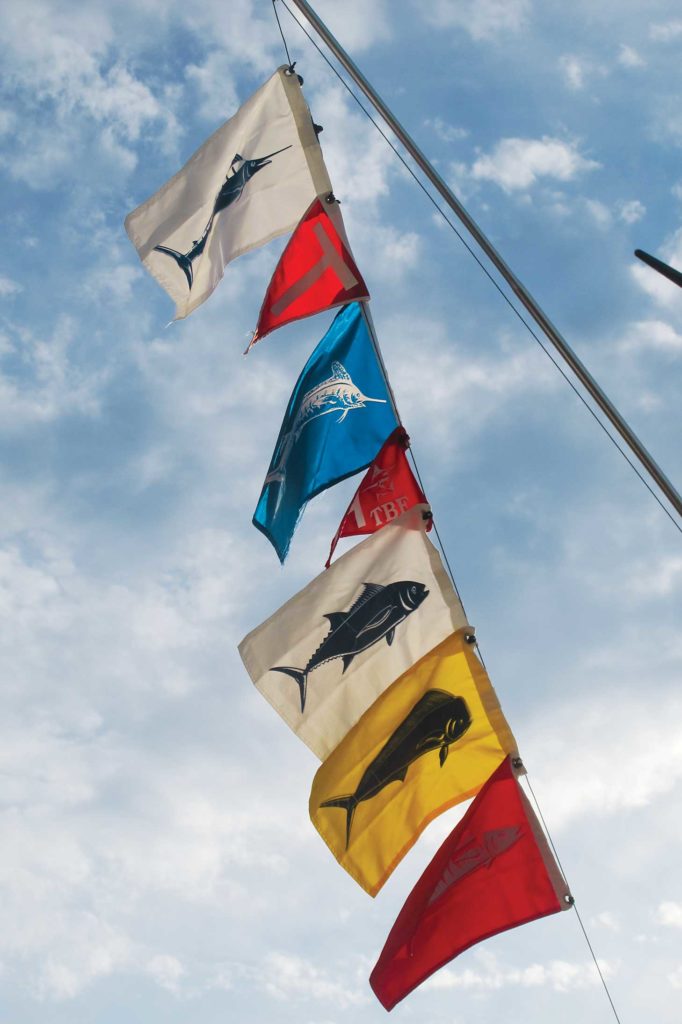
Capt. Mickey O’Reilly of Pensacola has been enjoying fall offshore fishing for nearly 40 years, the last five as skipper of his Cape Horn 24 Offshore. “The fall bite is historically good from September through November, sometimes even into mid-December, depending on the cold fronts,” O’Reilly explains. The seasoned captain says three or more shots at 50- to 60-pound white marlin are common, along with opportunities for blue marlin from 250 to 400 pounds and sailfish averaging 35 pounds. Some days produce up to 15 billfish strikes, plus wahoo and tuna up to 80 pounds, as well as dolphin pushing 50 pounds.
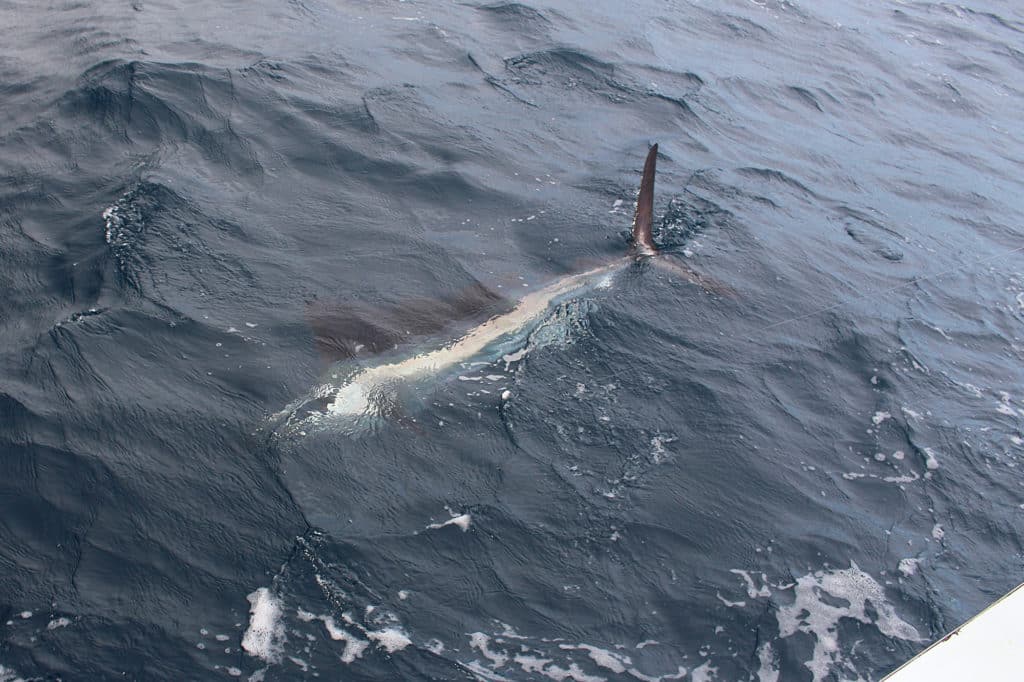
“The fall fishery is rebounding with the longline ban,” claims O’Reilly. “It’s really coming full circle. And you don’t have to run far,” he adds. “The bait is thick, and the Loop Current pushes in close. The best spots are the Nipple out to the Spur and the 100-fathom curve line from east to west. The Nipple is just 33 nautical miles from Pensacola Pass. The water there is 600 feet, and it drops down to 1,800 or more around the Spur.”
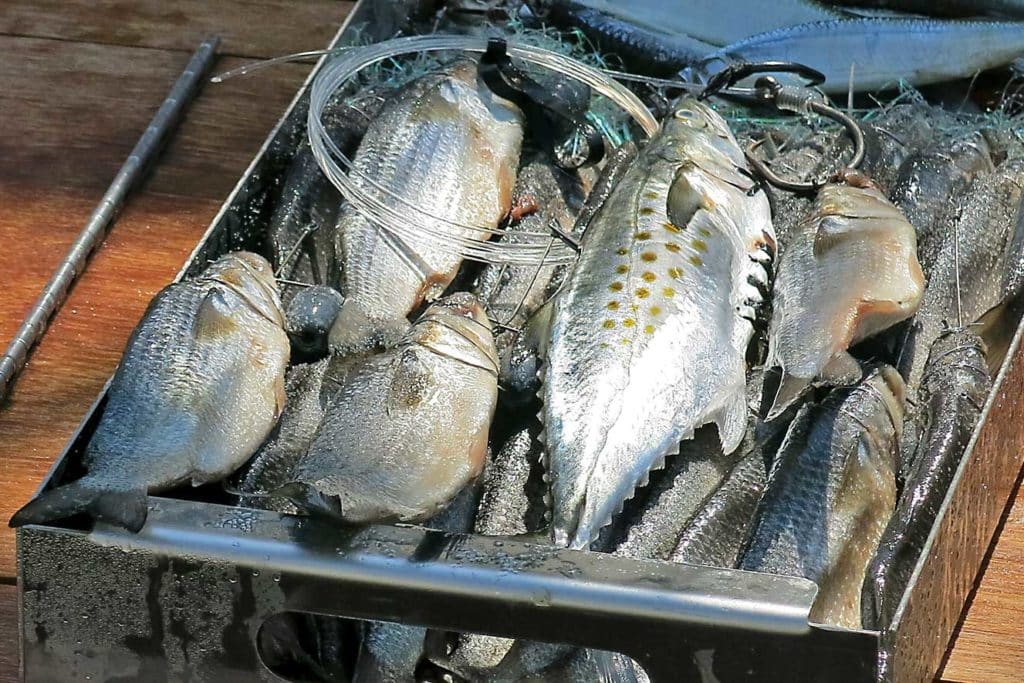
While he doesn’t pay any attention to the moon phase, O’Reilly compares charts from a couple of different forecasting companies to pinpoint significant currents. He looks for color changes offshore, weed lines and rips, but he also has success in open water. “Clear green water, dirty green water, pretty blue — I’ve had great days in all those conditions,” he adds. “And I’ve never really worried about water temperatures, either. If the bait is there, the bite will be on fire. So I just go whenever I can, and the fish have been there.”
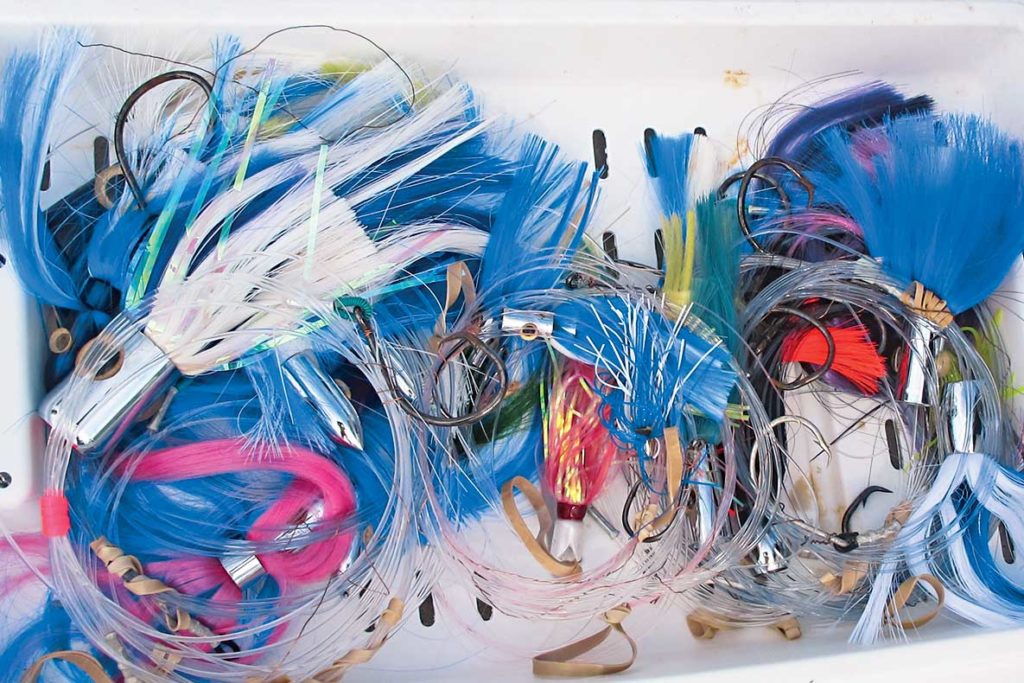
Because of his boat’s size —24 feet — O’Reilly limits his spread to five baits, two on staggered flat lines off the transom, two more off the outriggers and one long shotgun bait down the middle off the center rigger. He runs small Mold Craft, Marlin Magic and Black Bart lures in colors that mimic the more prevalent natural bait, as well as Ilander lure/ballyhoo combos, all deployed from 30-pound stand-up trolling outfits and rigged with single J hooks. In addition, he keeps handy a naked ballyhoo rigged with a circle hook on a spinning outfit as a pitch bait.
“When fishing the smaller baits, a slower trolling speed is key for the best tracking and overall action,” says O’Reilly, who also believes the smaller boat and trolling spread equal greater maneuverability, a definite advantage with lighter tackle. “With just five rods, I can turn really tight without tangling and get after the fish.” After a hookup, he quickly steers toward the fish to create a belly in the line while the remaining lines are cleared. Meanwhile, the angler moves to the bow for the fight, which lasts 30 minutes or less when the fish is a white marlin or sailfish. “I like to keep the fish off to my left and get right on top of them. There’s nothing I can’t do off the nose of the boat.”
Port Flat Line Setup
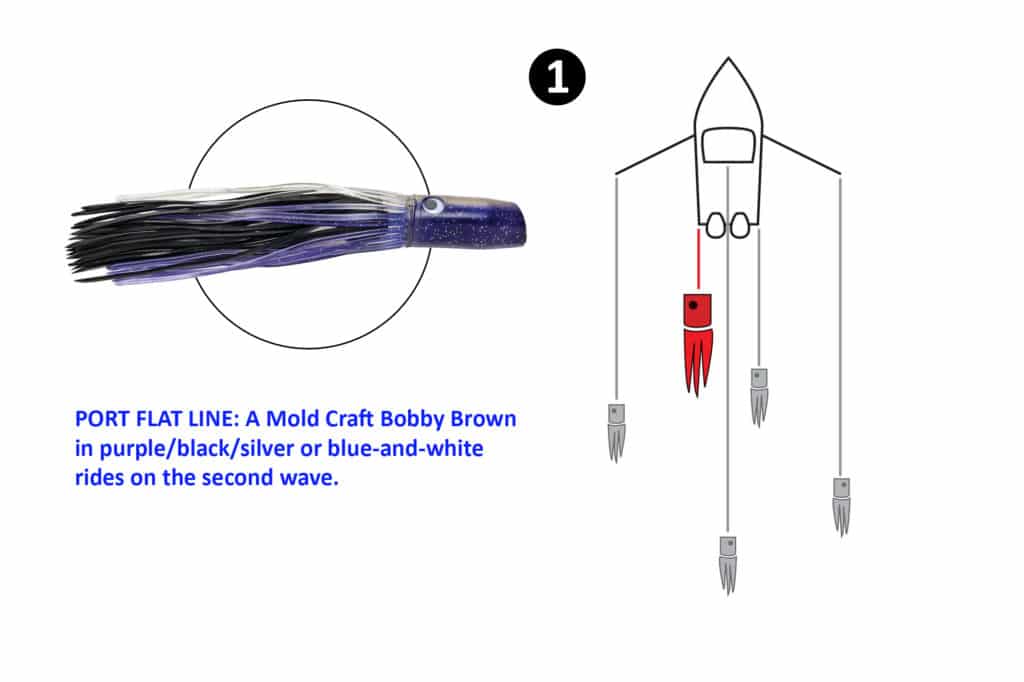
A Mold Craft Bobby Brown in purple/black/silver or in blue-and-white riding on the second wave is ideal for the port flat line.
Port Rigger Setup
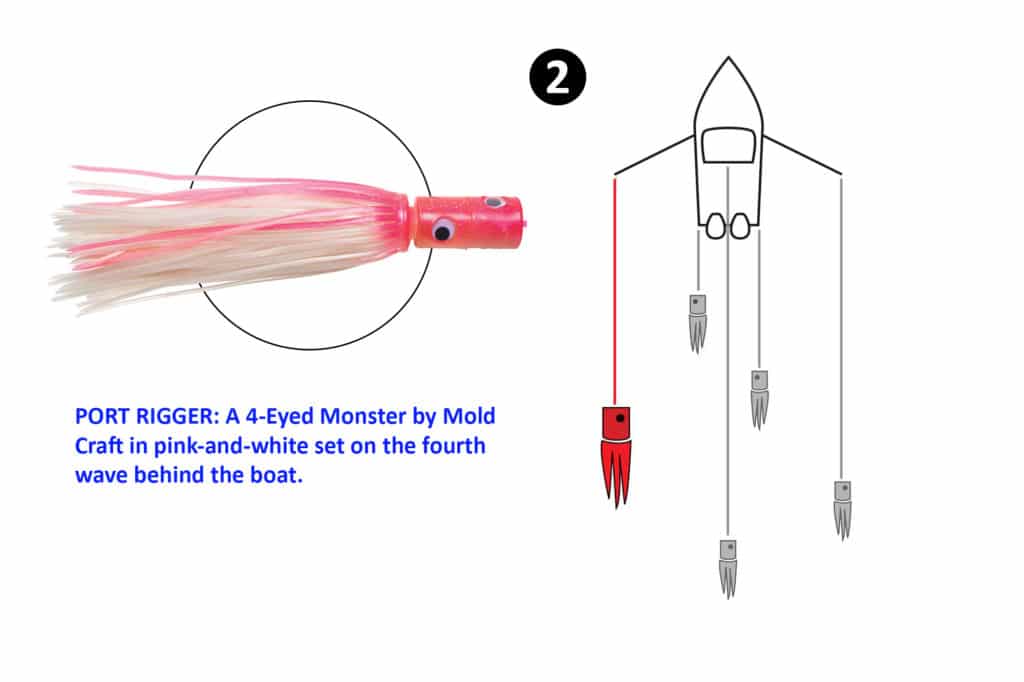
A Mold Craft 4-Eyed Monster in pink-and-white riding on the fourth wave is recommended for the port rigger.
Starboard Flat Line Setup
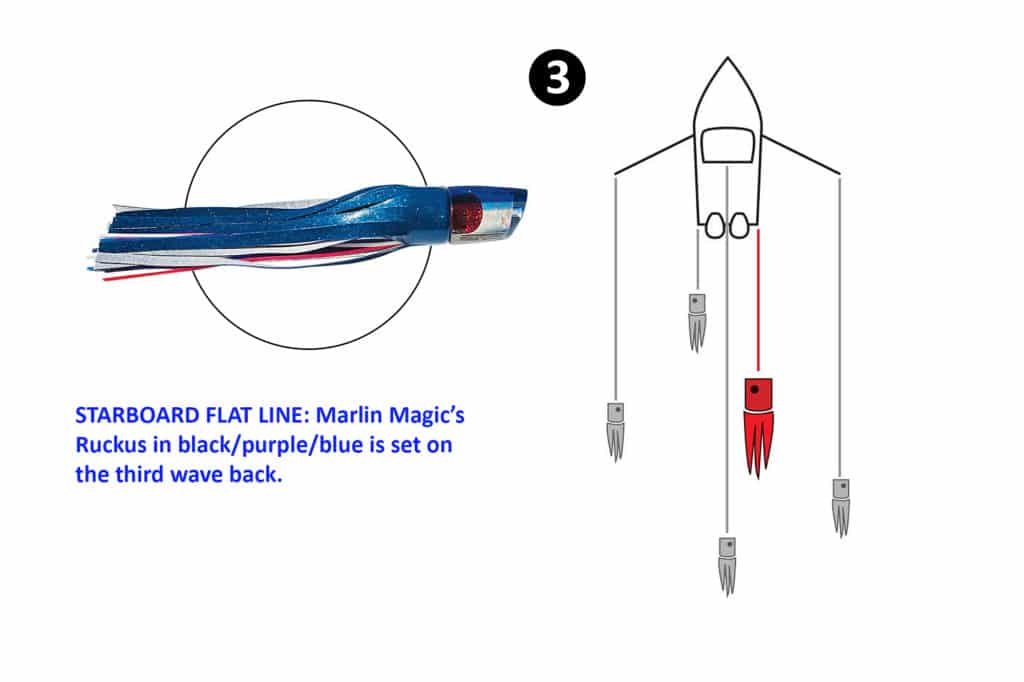
A Marlin Magic Ruckus in black/purple/blue riding on the third wave is a great option for the starboard flat line.
Starboard Rigger Setup
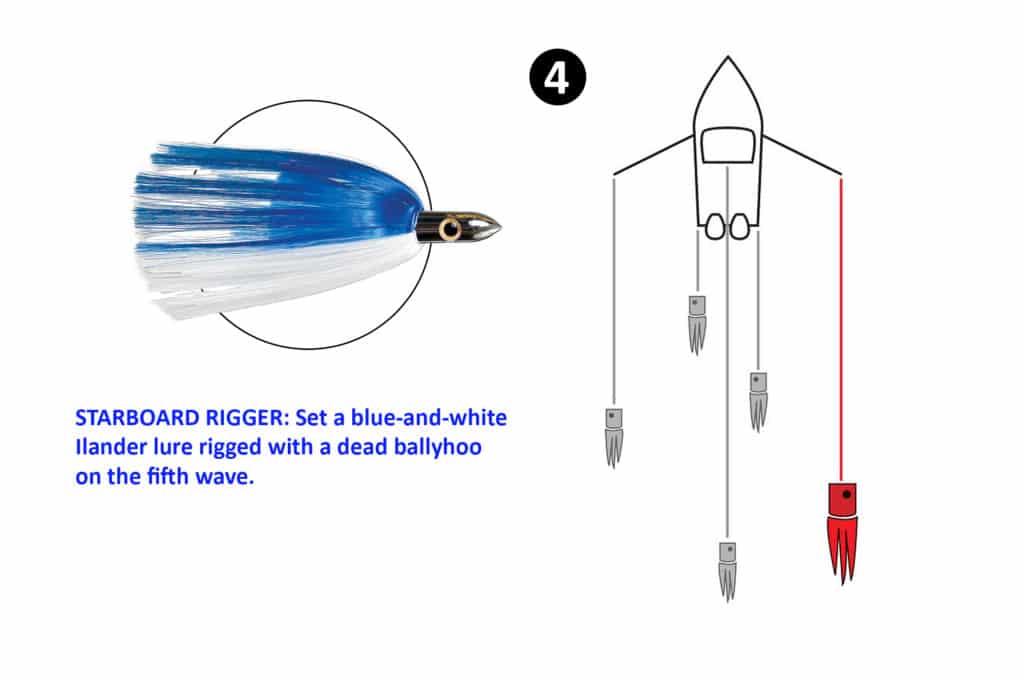
A blue-and-white iLander lure rigged with a ballyhoo and riding on the fifth wave is the right choice for the starboard rigger.
Starboard Rigger Setup
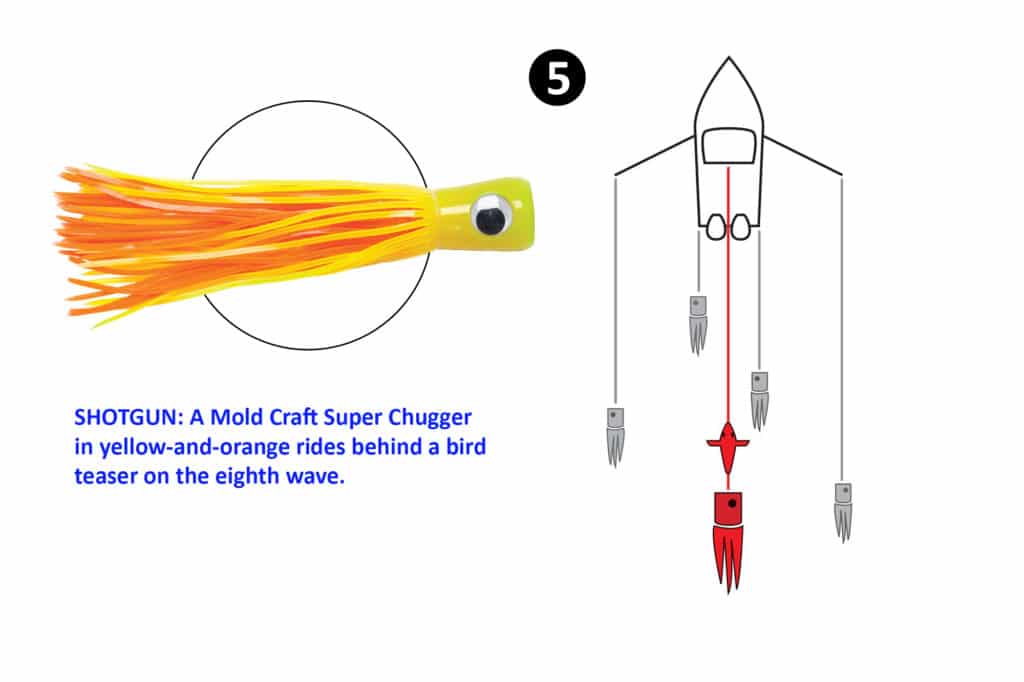
A Mold Craft Super Chugger in yellow-and-orange rigged behind a bird teaser and riding on the eighth wave is tough to beat for the center rigger.
Consider Safety First
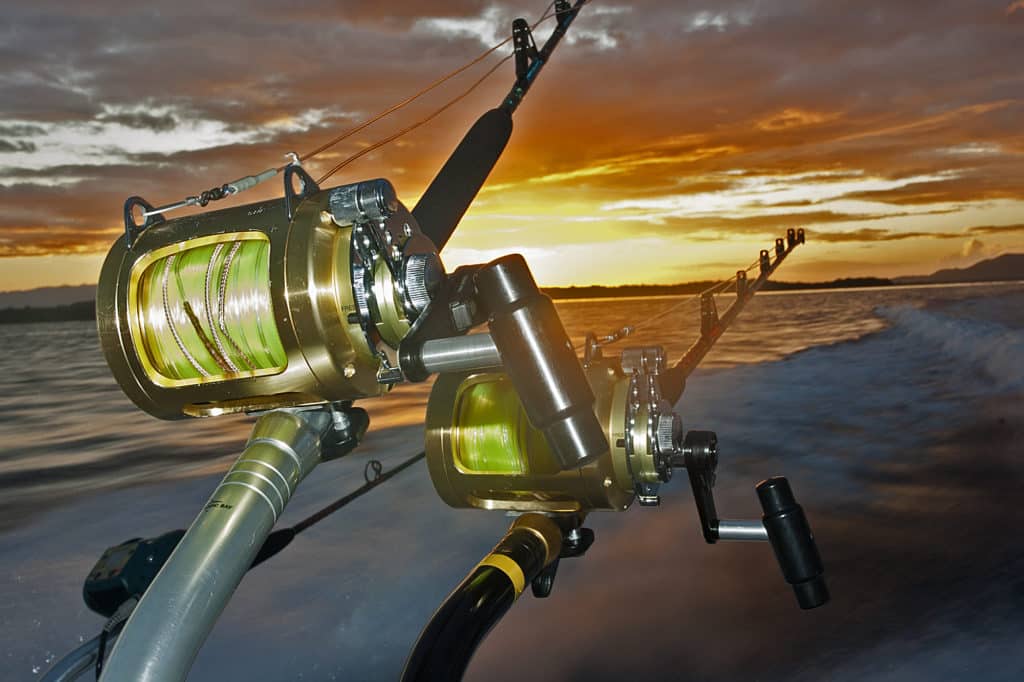
It’s crucial to know the boat’s fuel consumption and always maintain a safety reserve. The run to the fishing grounds is shorter in fall, but O’Reilly cautions smaller boats still need to be mindful of approaching cold fronts, which quickly turn a short ride into an exceptionally long one if the seas build suddenly. Personal safety also becomes an issue. A quick turn or a wave can roll someone overboard, so he goes over safety procedures and talks about the day’s strategy with the crew. For extra insurance, everyone aboard his boat remains tethered to a safety line throughout the hour-long run to the fishing grounds, and all hands wear a leader release knife.
“There’s no voodoo magic to this. It’s really standard stuff — just downsize the gear and troll at slower speeds. You’re going to lose some fish, but that’s the nature of the light-tackle game. But you’re also going to get a lot of chances, so be ready to mix it up. In a small boat, it’s all about flexibility.”









